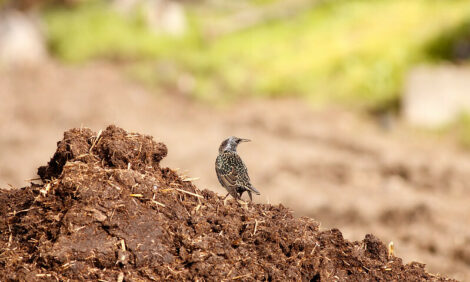



The Increasing Ineffectiveness of Antibiotics - The Role of Agriculture
GLOBAL - The use of antibiotics in the production of poultry, cattle, and swine has led to significant increases in the population of antibiotic-resistant bacteria, which can be transmitted to humans through direct contact with animals and through their meat, eggs, and milk, according to a report from the US' Center for Disease Dynamics, Economics & Policy.Some of these antibiotics end up in the wider environment and increasingly, evidence from around the world shows an overall decline in antibiotic effectiveness.
Resistance to all first-line and last resort antibiotics is rising. Increasing world prosperity and population growth drive increasing demand for animal protein. To satisfy this need, many farmers are using the latest intensive agriculture and often use antibiotics to optimise production.
Antibiotics are used not only to treat individual animals with bacterial infections and prevent infections in herds or flocks, but also to promote growth - a controversial yet highly popular application.
Worldwide, in 2010, more than 63,200 tons of antibiotics were consumed by livestock: more than the total human consumption.
By 2030, this figure is predicted to increase by two-thirds to meet the demands of the UN-projected 8.5 billion human populations. Two-thirds of the projected increase is accounted for by increases in the number of animals raised for food production and the remaining one-third by the shift to industrial-scale production.
Antibiotic growth promotion is the focus of most legal and regulatory efforts to reduce animal antibiotic use because it provides no health benefit to the animals while it accelerates antibiotic resistance.
Recent analyses suggest that such use has less of an effect on animal growth than was previously assumed. Those countries with the greatest projected increases in food demand and animal antibiotic use also currently have the least efficient farming systems. Emphasis should be on improving productivity without antibiotic growth promoters, as is increasingly the case in high-income countries.
Required Action
The aim should be to reduce and eventually phase out antibiotic use in agriculture. Eliminating antibiotic use for growth promotion and minimising use for disease prophylaxis need not jeopardise animal or human health.
Health professionals, policy makers and the public need to be educated and informed about sustainable antibiotic use.
National awareness campaigns for the public should begin changing the norms in antibiotic use in both agriculture and general practice and promote conservation.
National & Worldwide Commitments
In May 2015, the World Health Assembly endorsed the Global Action Plan on Antimicrobial Resistance, which calls on all countries to adopt national strategies within two years. With support from WHO and the international community, this resolution could be a catalyst for change but, like similar resolutions over the past decade, it may be ignored.
In the US, the National Action Plan for Combating Antibiotic-Resistant Bacteria stresses the need to slow the spread of antibiotic resistance through stewardship at all levels. The European Union has taken a similar stance. Southeast Asian WHO countries are committed to addressing the issue.
Instead of being the default treatment for a host of mild ailments, particularly coughs, colds, and uncomplicated diarrhoea, antibiotics must be considered life-saving medicines and reserved for use only when absolutely necessary.
Summary
Increasing use of antibiotics in agriculture is a major factor in their growing worldwide ineffectiveness.
Action is required to educate and inform the public, those involved in agriculture and the medical profession to change the culture of antibiotic use. Nascent national campaigns have begun this process and must be built on - with antibiotic use re-prioritised.








